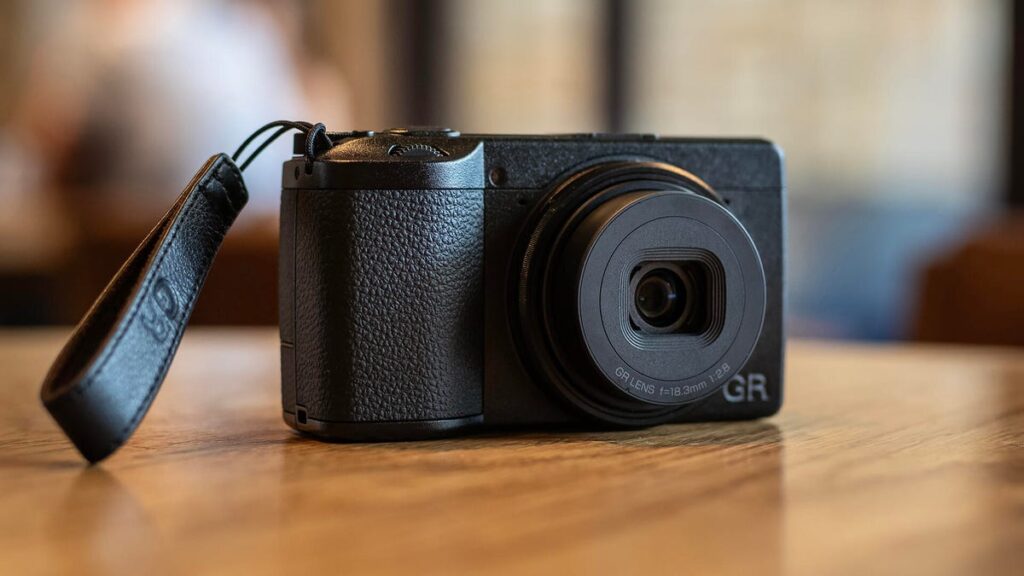With pocket camera popularity on the rise, Ricoh has announced the GR IV, an updated version of its excellent, diminutive (and quite old) GR III. It’s a fixed-lens camera that can easily fit in a pocket, but inside is a big APS-C image sensor — far larger than what you can get in a phone. Larger image sensors typically mean better image quality compared to smaller sensors.
I really liked the GR III and picked it as the best point-and-shoot camera for travel. The images it captured were better, especially in low light, than most of the other small cameras I tested. However, it felt quite dated. The new GR IV, on paper at least, seems to improve on many of the GR III’s more aged aspects but keeps the vast majority of the camera the same. That’s generally a good thing.
Big sensor, little camera
- 25.7-megapixel images (6,192×4,128)
- 18.3mm f/2.8 lens (28mm in 35mm equivalent)
- 1080p/60 video
- 5-axis image stabilization
- Faster startup compared to previous GR cameras (claimed to be 0.6 seconds)
- Built-in ND filter (2 stops)
- 53GB internal storage (also microSD)
- Wi-Fi and Bluetooth 5.3
The two benefits of the GR III and its predecessors carry over to the GR IV: It’s an extremely small camera with a big image sensor. The body is 4.3 by 2.4 by 1.3 inches, which is roughly the same width as a smartphone, thicker but shorter. It should fit easily in most pockets. The IV is very slightly smaller than the GR III.
Again, inside is a new APS-C-sized image sensor, though it’s the same size used in the GR III and basically the same resolution. Ricoh says it has “higher sensitivity and reduced noise” compared to the sensor in the GR III. It would have been great to see a higher-resolution sensor, allowing for more detail when cropping in on an image, considering the GR IV has a fixed, wide-angle lens.
That lens is an all-new design, with an 18.3mm focal length (equivalent to 28mm). That matches the GR III, as does its f2.8 aperture. This is on the narrow end of what’s typically considered a wide-angle lens, but it’s similar to the field of view of the main cameras on most smartphones. Ricoh says the lens’s glass elements allow for “edge-to-edge sharpness.”
The GR IV has 5-axis shake reduction, up from 3-axis on the GR III, to help reduce blurriness during longer shutter speeds. Ricoh says this offers up to six stops of stabilization. This, along with the higher sensitivity of the image sensor, could mean the GR IV does really well in low light.
Along with the launch of the GR IV, Ricoh has announced several accessories, most notably a compact flash that connects via the hot shoe on top of the camera. After years of cameras trying to reduce the need for flashes, the resurgence of retro digital cameras and their aesthetic is bringing them back. Additionally, there will be some cosmetic alternatives, including a metal hot shoe cover, plus a wrist strap (pictured in the top image) and a lens adapter to fit the GW-4 wide conversion lens that’s currently available for the GR III.
Should you wait for the GR IV?
On paper, the updates to the GR IV seem fairly mild. Same overall design, same resolution, same focal length. However, there’s definitely an “if ain’t broke, don’t fix it” aspect to all of that. The GR III worked great, creating high-quality images in a pocket-size camera. It’s often said the best camera is the one you have with you, and it was very easy to have the GR III with you.
The new lens, image sensor and stabilization could be solid upgrades. I won’t know until I test the GR IV (likely next month when it launches). I’m a little disappointed it’s not higher resolution. That’s not a huge deal, but I’ve been using a fixed-lens camera for several months now as my main camera, and being able to crop in on the 40MP images has come in handy. Then again, if I were in a situation where I wanted to capture something in the distance, I’d usually just use the telephoto on my Pixel 9 Pro.
If you’re interested in a GR camera, I’d recommend waiting a few weeks if you can. Either the GR IV will be a worthy upgrade and worth getting, or it will just be a minor improvement and the older, and likely cheaper, GR III will be the better option. The Ricoh GR IV will be available in mid-September for $1,500.
Read the full article here

